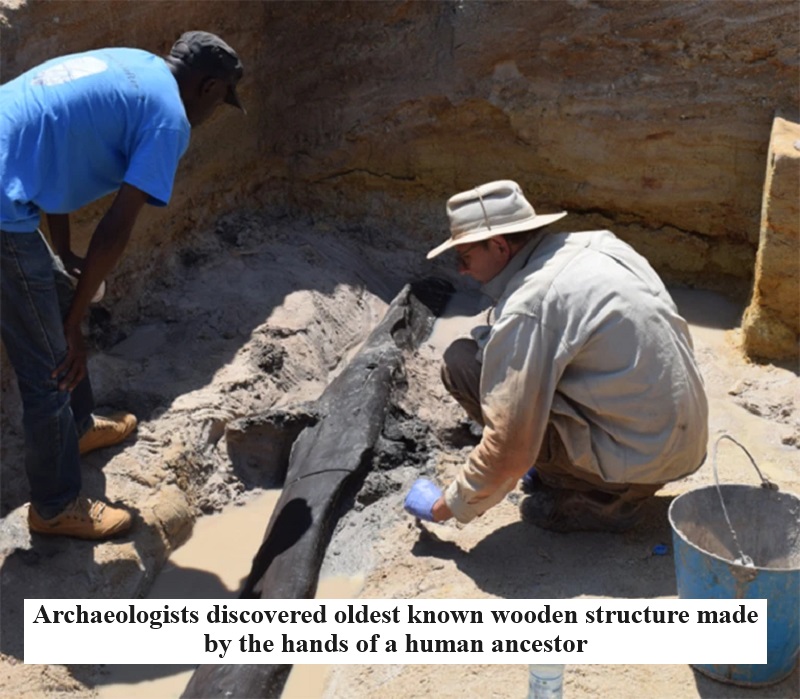
Archaeologists have made a remarkable discovery of the oldest wooden structure crafted by a human ancestor, dating back nearly half a million years. The researchers stumbled upon this primitive wooden structure in the vicinity of Zambia’s Kalambo Falls, and this finding implies a level of cognitive sophistication among its creators.
Regarding the Discovery:
A detailed study about this remarkable discovery was published on September 20th in the journal Nature, outlining the wooden objects unearthed by the researchers.
The wooden structure in question consists of two interlocking logs from a large-fruited willow tree, with a specifically carved notch in the upper piece to allow them to fit together at right angles—an act performed around 476,000 years ago, according to the researchers.
Before this discovery in Zambia, the oldest wooden structure known to us was just 9,000 years old. In comparison, the oldest wooden artifact, found in Israel, is believed to be a fragment of a plank dating back 780,000 years.
Kalambo Falls, situated on Lake Tanganyika in northern Zambia near the Tanzanian border, has been under scientific investigation since the 1950s.
In addition to the world’s oldest wooden structure, the recent study reveals the presence of stone tools beneath the river, three of which were covered in clay deposits above the river level.
Notably, these wooden artifacts endured for hundreds of thousands of years due to the permanently elevated water table, as the structure was discovered in 2019 above a 235-meter-high waterfall along the Zambian riverbanks.
Implications of the Discovery:
Although the exact purpose of the wooden structure remains uncertain, scientists speculate that it may have been part of a wooden platform used as a walkway, to protect food or firewood from moisture, or as a foundation for constructing a shelter. Researchers also uncovered a digging stick and other wooden tools at the same site.
Larry Barham, an archaeologist from the University of Liverpool, suggests that the framework could have served various functions, including providing a raised walkway or platform above the seasonally wet environment.
The discovery of these interlocking logs with “no known parallels” in the African or Eurasian Paleolithic period is groundbreaking. It also pushes back the dates of the earliest instances of woodworking, pre-dating the emergence of Homo sapiens, our own species.
The emergence of Homo sapiens dates back around 300,000 years. This discovery has fundamentally changed our understanding of the people of that era, highlighting their ability to adapt and improve their surroundings through ingenuity, showcasing abstract thinking and possibly the development of language. As Barham puts it, they demonstrated the capacity to “create something they’d never seen before, something that had never previously existed.”

Post Your Comments